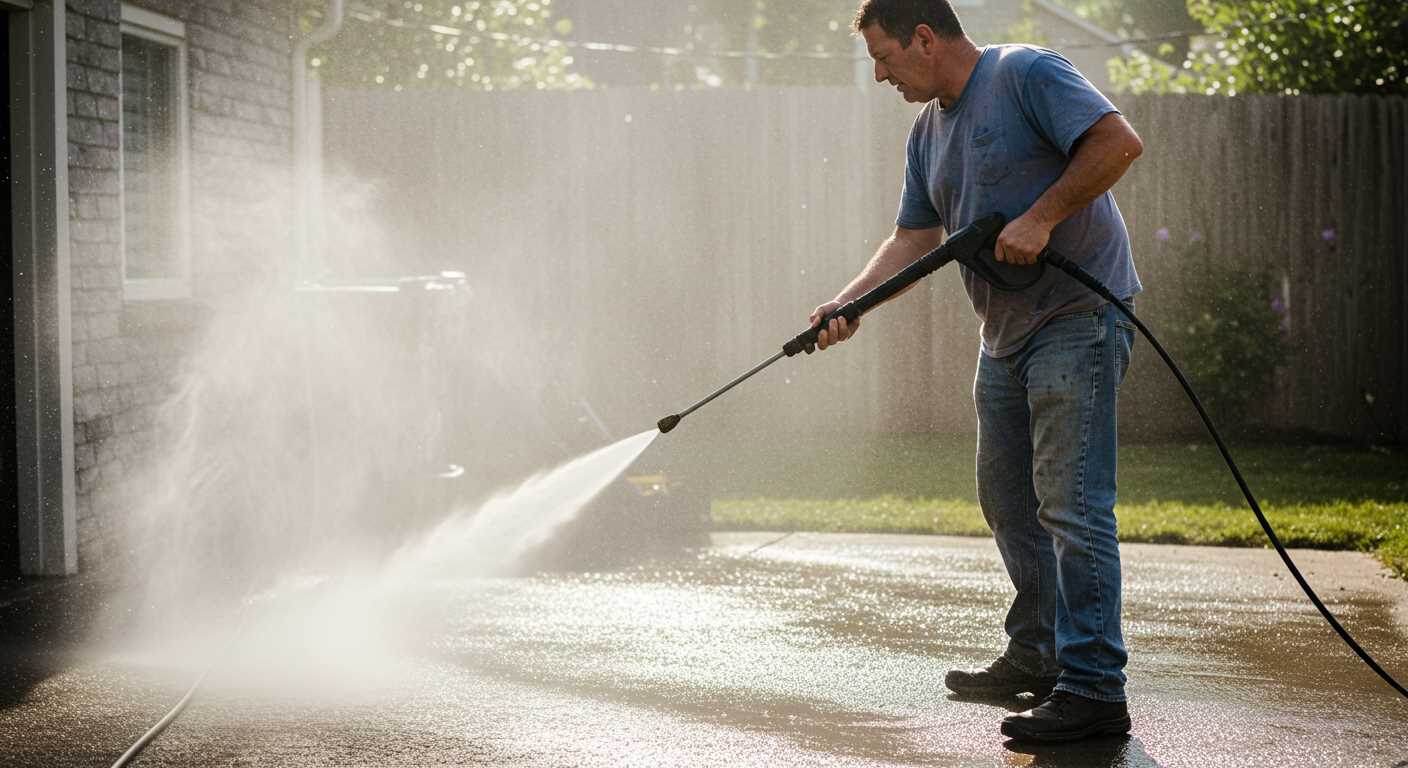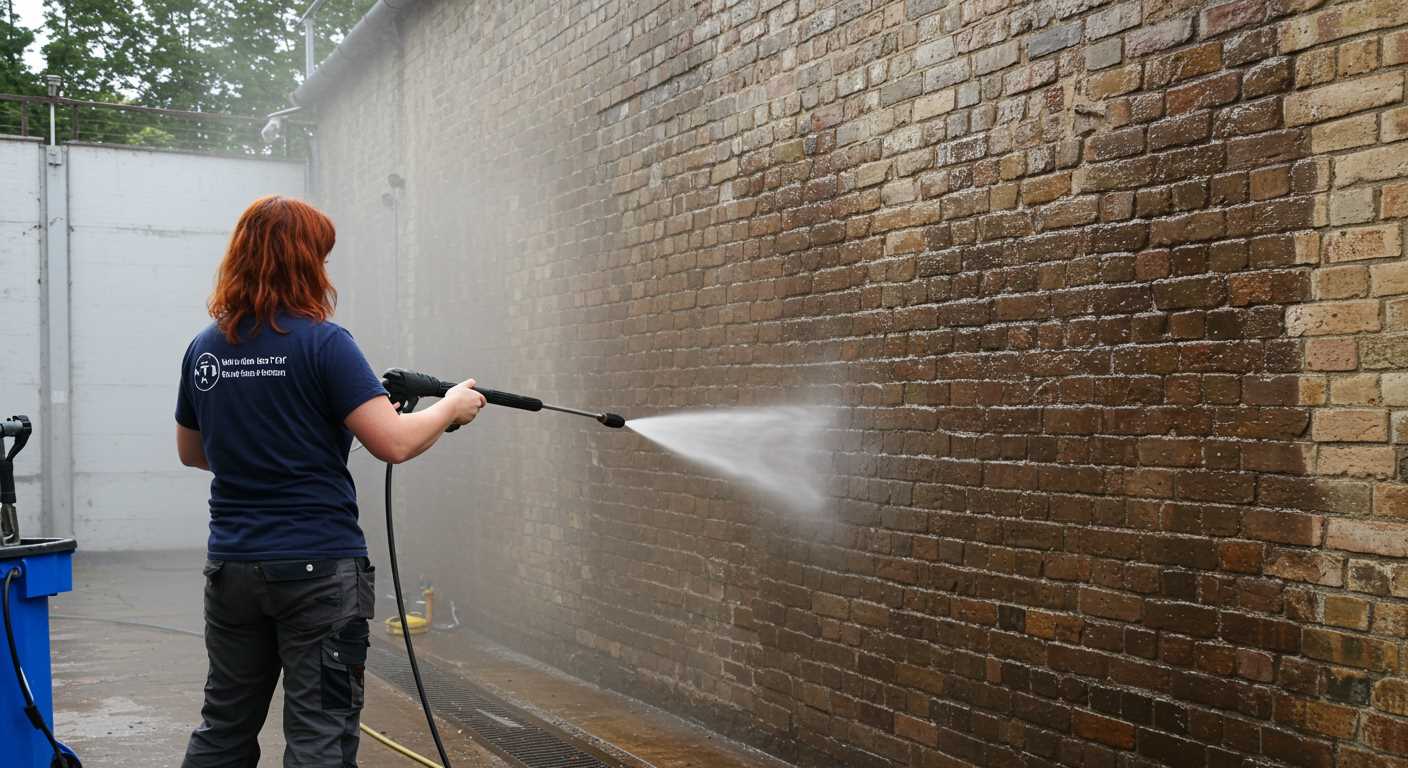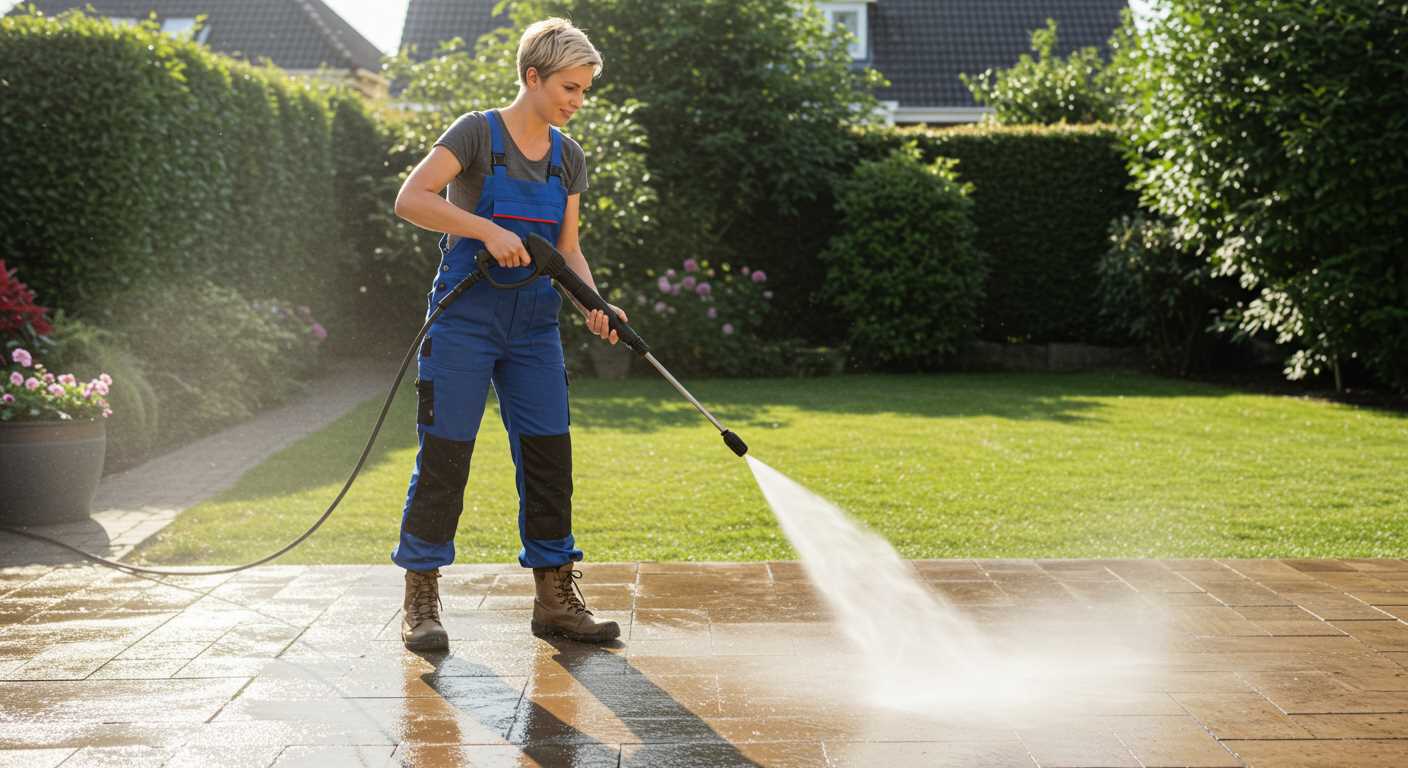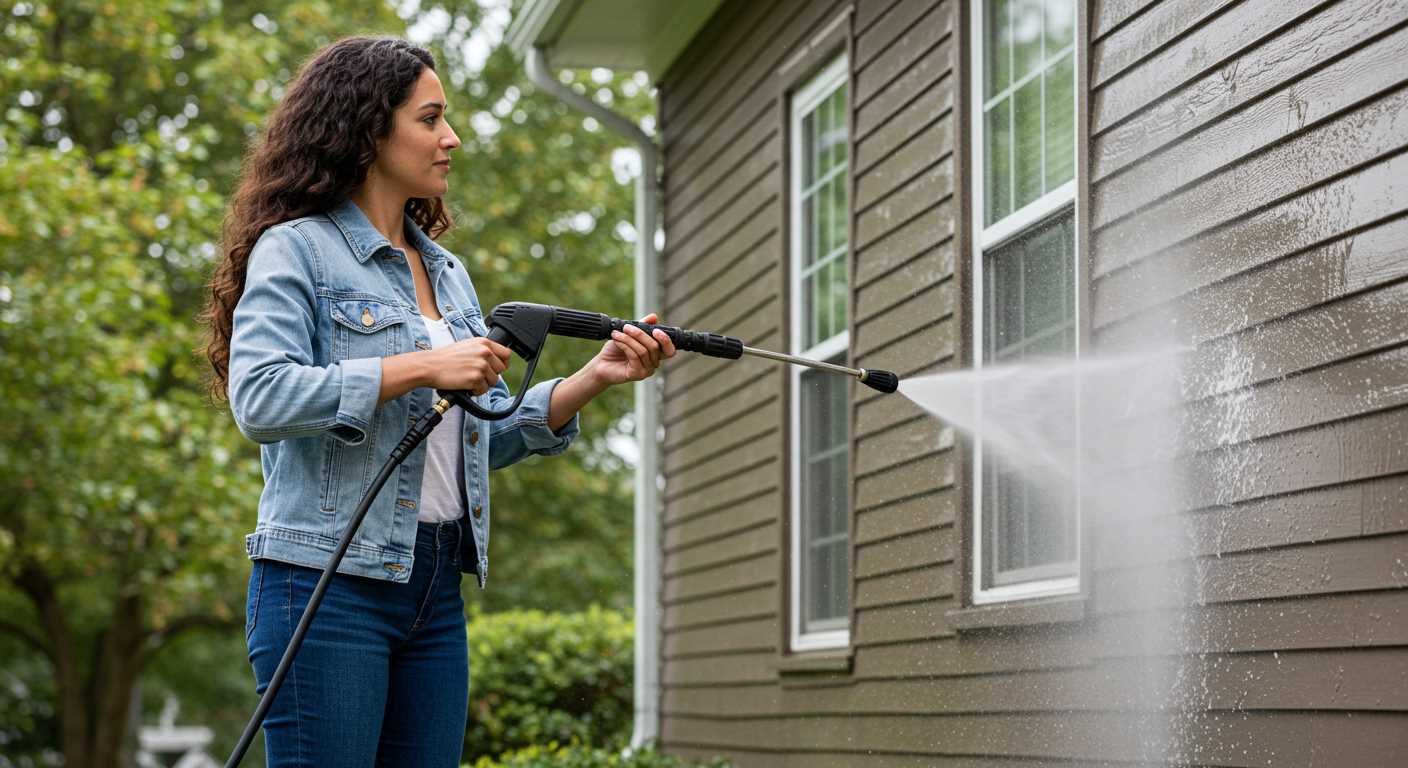

If you’re aiming for effective outdoor cleaning, investing in a quality cleaning machine is paramount. The efficiency of this tool lies in its ability to deliver water at forceful velocities, transforming everyday tasks such as washing patios, cleaning vehicles, and prepping surfaces for painting into effortless achievements. Such machines utilise a motor that pressurises water, resulting in a focused stream capable of dislodging stubborn dirt and grime.
The heart of this mechanism is the pump, which plays a crucial role in elevating water pressure. It works by taking in water from a source, whether it’s a garden tap or a built-in tank, and compressing it into a tightly packed stream. The quality of the pump directly influences the output pressure and flow rate, which in turn dictates the tool’s cleaning power.
Additionally, various nozzle attachments can modulate the type of spray, allowing for versatility in tackling different cleaning tasks. For instance, a narrow jet can target tough stains effectively, while a wider spray is better suited for rinsing larger surfaces. By understanding these components and their functions, you can optimise your experience and enhance cleaning efficiency.
Understanding the Components of a High Pressure Washer

The motor powers the entire system, converting electrical energy into mechanical energy, which is critical for generating the desired force. Electric models typically use universal motors that are compact but may lack the longevity of gas counterparts, which often feature robust engines designed for heavy-duty usage.
A robust pump is central to this device’s performance. Pumps are usually classified as axial or triplex. Axial pumps are adequate for light to moderate tasks, while triplex pumps handle more intense jobs due to their durability and efficiency, ensuring longer life spans even under pressure.
<p(Nozzles dictate the spray pattern, which influences cleaning efficiency and surface damage risk. Adjustable nozzles offer versatility; rotating nozzles enhance dirt removal through a concentrated spin effect. Selecting the correct nozzle is essential for optimal results.)
<p(Thermal relief valves protect the pump from damage by preventing overheating. This feature reroutes water flow when the device is inactive, maintaining safe operating temperatures and extending the lifespan of the unit.)
<p(Basic designs incorporate a hose that delivers water from the pump to the nozzle. Quality hoses withstand high forces and are resistant to kinks that can impede performance. Rubber or reinforced materials are optimal choices.)
<p(The trigger gun is the interface for controlling water flow. Advanced models may come with pressure settings to further tailor the force applied when cleaning, providing greater control for various tasks.
<p(Attachment options like brushes, surface cleaners, and other accessories enhance functionality. Selecting the appropriate tool for the job enhances cleaning efficiency and shortens time spent working.)
<p(Always ensure regular maintenance is practiced. Regular checks of the components will prevent issues and maintain strong performance standards over time.
The Role of the Electric Motor or Engine
In my extensive experience with cleaning equipment, I’ve found that the electric motor or engine serves as the power source for the entire apparatus. Its efficiency directly impacts the performance and longevity of the unit. When evaluating options, consider motors with higher wattages, as they generally provide better pressure and water flow–key elements for effective cleaning.
There are two primary types of motors: induction and universal. Induction motors are known for their durability and quieter operation, ideal for residential use. If you’re looking at more portable models, universal motors are lighter and can deliver high RPMs, though they may require more frequent maintenance.
Moreover, the cooling mechanism of the motor should not be overlooked. Effective cooling ensures that the motor does not overheat during prolonged use, leading to a longer lifespan. Look for models featuring integrated cooling systems that circulate air efficiently around the motor components.
Another aspect to consider is the power source compatibility. Most electric variants operate on standard household voltage, while gasoline engines offer greater portability but come with increased maintenance and emissions. If you frequently clean large areas away from power sources, a gas-powered option might be preferable.
Lastly, always check the warranty period for the motor. It usually reflects the manufacturer’s confidence in their product’s durability. A more extended warranty often indicates a robust design that can withstand frequent use, offering you peace of mind with your purchase.
How Water is Pressurised in the System
.jpg)
Water is pressurised through an intricate process involving a series of components working in harmony. The journey begins as the liquid enters the unit from a standard source, typically through a garden hose. Once inside, the flow is directed towards an integral pump assembly.
The heart of this operation is the pump, designed specifically for intensifying the water. I observed various designs, but reciprocating and axial pumps stand out for their efficiency and durability. As the pump activates, it compresses the water within its chambers, creating a significant increase in force. The careful engineering of these pumps allows for maximised output with minimal input, making them highly effective for demanding cleaning tasks.
A crucial factor in this water intensification is the pump’s valve system. When the pump operates, the inlet valve opens, allowing water to fill the pump chamber. As the piston or impeller moves, the outlet valve closes, trapping the water. The continuing motion then effectively compresses the water, releasing it at an elevated force through the nozzle. Precision in this mechanism is key; if any component falters, the intended effect can diminish drastically.
The integration of an adjustable nozzle further enhances the system. By altering the nozzle’s aperture, users can control the flow and intensity of the water stream, adapting it to suit specific cleaning needs. This flexibility is highly beneficial for tasks ranging from delicate surface cleaning to heavy-duty grime removal.
Add to this the advanced technology found in some models, such as pressure sensors and automatic shut-off features, which help manage the operation and ensure optimal performance. These innovations not only extend the lifespan of the equipment but also guarantee that energy and water are used efficiently, avoiding waste.
In summary, the effective pressurisation of water relies heavily on the quality and design of the pump and its associated components. Understanding this system empowers users to select the right equipment for their needs, ensuring effective cleaning solutions while maintaining cost efficiency and sustainability.
The Importance of Nozzle Selection for Different Tasks
Choosing the right nozzle is critical for achieving optimal results with any cleaning equipment. Each nozzle type is engineered for specific tasks, and using the appropriate one can enhance efficiency and effectiveness.
- Zero-Degree Nozzle: Generates a concentrated jet ideal for difficult stains on hard surfaces like concrete or brick. Use this for tough grime, but maintain a safe distance to avoid damage.
- 15-Degree Nozzle: This nozzle provides a narrow spray pattern, making it suitable for stripping paint or heavy cleaning. It is effective for driveways and decks, offering a balance between power and coverage.
- 25-Degree Nozzle: A versatile choice for general cleaning duties. It’s suitable for washing vehicles, siding, and patios. The wider spray pattern ensures thorough coverage while delicately handling surfaces.
- 40-Degree Nozzle: Designed for gentle washing, this is great for lighter tasks such as cleaning windows or outdoor furniture. It maximises coverage while minimising water pressure, making it safer for delicate areas.
Keep in mind that nozzle selection should also factor in water flow rates. A higher flow rate may require a different nozzle to maintain efficiency, as the force can affect the cleaning outcome. Additionally, for various surfaces and materials, understanding the compatibility of nozzles with your equipment prevents damage and promotes longevity.
- For soft surfaces such as car paint, use wider nozzles.
- For heavy-duty tasks, narrow nozzles provide necessary pressure.
Test each nozzle on a small, inconspicuous area first to gauge effectiveness and ensure safety. Adapting nozzle selection to specific cleaning tasks maximises results while protecting surfaces from potential harm.
Maintaining Flow Rate and Pressure for Optimal Results

Regularly monitoring and adjusting both flow rate and pressure is fundamental for achieving the best outcomes with any cleaning device. I recommend using a flow meter to assess water consumption. This enables you to confirm that your unit is delivering adequate water volume for the tasks at hand.
Calibration Checks

Perform periodic calibration checks on the system to ensure that pressure levels remain consistent. Using a manometer can provide precise readings, allowing adjustments if any discrepancies arise. If you notice a drop in performance, it may indicate a blockage, such as debris in the inlet filter or hose, which should be addressed immediately.
Regular Maintenance
It’s critical to conduct routine maintenance on the pump and motor components. Lubrication of the pump seals and bearings can prevent wear and tear, thus prolonging lifespan and ensuring sustained performance. Cleaning or replacing intake filters regularly prevents clogs, maintaining optimum water flow and consistent pressure delivery.
Pay attention to the nozzle sizes as well. Using appropriate nozzles not only affects spray patterns but also significantly influences the flow rate and pressure. For instance, a narrower nozzle increases pressure but reduces flow, while a wider nozzle decreases pressure but enhances flow. Match the nozzle to the task for optimal results.
Understanding and maintaining these parameters ensures your equipment operates efficiently and effectively, delivering superior cleaning results whilst extending its service life.
Common Applications of High-Pressure Cleaning Equipment

For domestic use, I recommend tackling patios and driveways. The intense force of the water stream easily removes ingrained dirt, moss, and oil stains, revitalising outdoor surfaces efficiently. A 1500 to 2000 PSI model is typically sufficient for these tasks.
In commercial settings, vehicles benefit greatly from this cleaning method. Using the right attachments, such as foam cannons, can enhance results, allowing for a thorough wash that removes grime and enhances the appearance of cars, trucks, and buses. Opt for a machine with adjustable pressure settings for this application.
Industrial environments often deal with heavy-duty tasks. Equipment like machinery and production lines accumulate grease and contaminants that standard cleaning methods cannot effectively handle. Machines with higher PSI, around 3000 or more, are ideal for such demanding applications.
Another frequent use is in the maintenance of swimming pools. A targeted spray can clear away algae and debris quickly from surfaces, ensuring a clean and safe swimming environment. It’s best to use a wide-angle nozzle to cover larger areas without damaging the pool material.
Cleaning decks and fences also proves beneficial, as this equipment removes weathered finishes and prepares wood for refinishing. A lower pressure setting will protect the wood while still ensuring the surface is prepped adequately.
Lastly, agricultural applications cannot be overlooked. Equipment is essential for cleaning farm machinery and livestock areas, improving hygiene and operational efficiency. Utilising a hot water option can further enhance cleanliness by dissolving stubborn residues more readily.
Safety Precautions When Using a High-Pressure Device
Always wear appropriate personal protective equipment (PPE). This includes safety goggles or a face shield to protect your eyes from debris, heavy-duty gloves to safeguard your hands, and sturdy footwear to prevent slips.
Ensure proper training before operating the equipment. Familiarise yourself with the user manual and understand the specific functions and controls of the unit.
Inspect the equipment for any damage prior to use. Check hoses, connectors, and nozzles. Avoid using devices with frayed hoses or loose fittings.
Never point the nozzle at yourself or others. The force of the water can cause serious injuries. Always direct the spray away from body parts and vulnerable areas.
Maintain a safe distance while spraying. Keep the nozzle at least 2 feet away from surfaces to prevent damage and reduce the likelihood of injury.
Be cautious of electric or gas-powered devices. Ensure the electrical cords are not exposed to water and keep fuel-powered units away from flammable materials.
| Safety Measure | Description |
|---|---|
| Wear PPE | Use goggles, gloves, and non-slip shoes. |
| Inspect Equipment | Check for damage on hoses, connectors, and nozzles. |
| Maintain Distance | Keep the nozzle at least 2 feet away during use. |
| Avoid Directing Spray | Do not point the nozzle at people or yourself. |
| Check Power Source | Ensure cords are insulated and fuel units are away from flammable items. |
During operation, be mindful of your surroundings. Watch for slippery surfaces or potential hazards that could lead to accidents.
Finally, ensure proper storage after each use. Disconnect the water supply, relieve pressure in the system, and store the unit safely away from children and pets.







